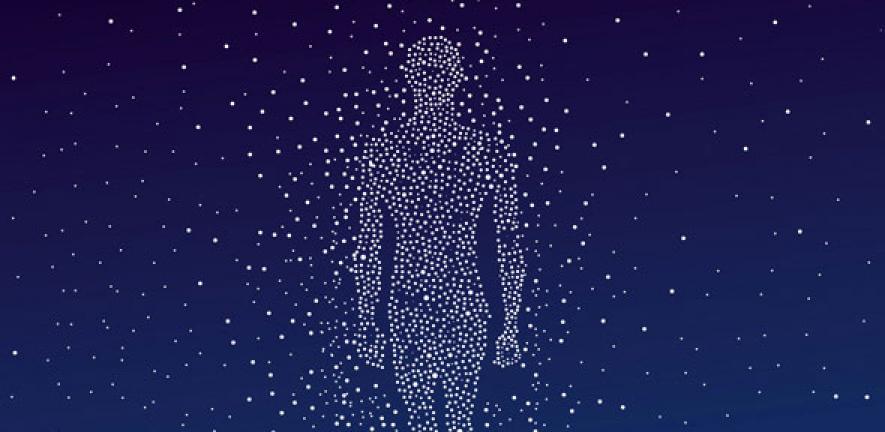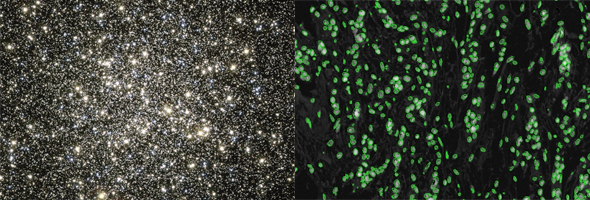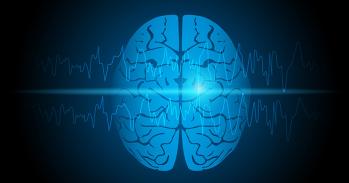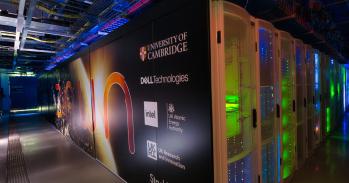
Astronomy and oncology do not make obvious bedfellows, but the search for new stars and galaxies has surprising similarities with the search for cancerous cells. This has led to new ways of speeding up image analysis in cancer research.
Astronomy and oncology do not make obvious bedfellows, but the search for new stars and galaxies has surprising similarities with the search for cancerous cells. This has led to new ways of speeding up image analysis in cancer research.
We deal with star deaths, they deal with patient deaths
Nic Walton
Despite their red-brick finish, the corridors of the Institute of Astronomy can seem more like an art gallery than a research centre, so beautiful are the images of supernovae and nebulae hanging there. Dr Nic Walton passes these every day as he makes his way to his office to study the formation of the Milky Way and search for planets outside our solar system.
On the screen of Walton’s computer is what appears to be a map of stars in our Milky Way. In fact, it is something that is around 25 orders of magnitude smaller (that’s ten followed by 25 zeros).
It is an image of cells taken from a biopsy of a patient with breast cancer; the ‘stars’ are the cells’ nuclei, stained to indicate the presence of key proteins. It is the similarities between these patterns and those of astronomical images that he, together with colleagues at the Cancer Research UK (CRUK) Cambridge Institute, is exploiting in PathGrid, an interdisciplinary initiative to help automate the analysis of biopsy tissue.
“Both astronomy and cell biology deal with huge numbers: our Milky Way contains several hundred billion stars, our bodies tens of trillions of cells,” explained Walton.
PathGrid began at a cross-disciplinary meeting in Cambridge to discuss data management. Walton has been involved for many years with major international collaborations that, somewhat appropriately, amass an astronomical amount of data. But accessing data held by research teams across the globe was proving to be a challenge, with a lack of standardised protocols. Something needed to be done and Walton was part of an initiative to sort out this mess.
The issue of data management in an era of ‘big data’ is not unique to astronomy. Departments across the University – from the Clinical School to the Library – face similar issues and this meeting was intended to share ideas and approaches. It was at this meeting that Walton met James Brenton from the CRUK Cambridge Institute. They soon realised that data management was just one area where they could learn from each other: image analysis was another.
Walton and his colleagues in Astronomy capture their images using optical or near-infrared telescopes, such as the prosaically named Very Large Telescope or the recently launched Gaia satellite, the biggest camera in space with a billion pixels. These images must then be manipulated to adjust for factors including the telescope’s own ‘signature’, cosmic rays and background illumination. They are tagged with coordinates to identify their location, and their brightness is determined.
Analysing these maps is an immense, but essential, task. Poring over images of tens of thousands of stars is a laborious, time-consuming process, prone to user error, so this is where computer algorithms come in handy. Walton and colleagues run their images through object detection software, which looks for astronomical features and automatically classifies them.
“Once we start characterising the objects, looking at what’s a star, what’s a galaxy, then we start to see the really interesting bigger picture. Light is distorted by gravitational mass on its way to us, so the shapes of the galaxies, for example, can tell us about the distribution of dark matter towards them. When we start counting stars, we start to see structures, like tidal streams.”
Professor Carlos Caldas, one of Brenton’s colleagues at the CRUK Institute, and now a collaborator of Walton’s, says the problems faced by medical pathologists are very similar, if at the opposite extreme of measurements. Could the same algorithms help pathologists analyse images taken by microscopes?

When a patient presents with suspected breast cancer, a pathologist takes a core of the tumour tissue – a tiny sample, less than 1 mm in diameter. The tumour samples are arranged on a block, typically together with 200 other samples taken from different patients. Each sample needs to have its own ‘coordinates’ so that the researchers know that a particular tumour came from a particular patient.
“We then cut a slice of the 200 or so cores, mount it into a slide that is stained, and take a digital picture of this slide,” explained Caldas, “but each of these high-resolution images is a few gigabytes of data, so we quickly accumulate hundreds of terabytes of data.”
By adapting the astronomers’ image analysis software, the PathGrid collaborators are able to analyse the tumour images, for example to recognise the three types of cells in the tissue samples: cancer cells, immune cells and stromal cells. Just as object identification in astronomy reveals hidden patterns and information, so the information from the slides begins to tell researchers how the different cell types relate to each other. Staining the samples to highlight elements such as potentially important proteins could also help the researchers identify new biomarkers to aid in the diagnosis or prognosis of cancers.
Equally important will be how the data is stored so that several years down the line, as researchers find new questions to ask, they can still access and analyse any of the 15,000 different tumours and their hundred stains. “We need to know that at some point in the future we can extract sample 53, for example, or find all tumours that were positive for a particular stain,” said Caldas. “Imagine if you had a million sheets of paper and you just threw them all into a room and asked someone to find page 53. They’d have to sort through all the papers to find the right one, but if you could make it glow, you’d be able to find it more easily. This is similar to what we do, except we do this digitally.”
As well as this technology allowing oncologists to ask new questions and at a much larger scale, Caldas believes that in the future it could be used as ‘digital pathology’, aiding diagnosis and prognosis even in regions with no specialist oncologists. “You could imagine a scenario where a clinician takes a biopsy and a pathologist processes and stains the slide, takes a picture and digitally relays it. This is then analysed by one of the algorithms to say if it is a tumour, identify the tumour type and say how aggressive it will be.”
Walton makes an interesting and unexpected comparison between his and Caldas’s work: “We deal with star deaths, they deal with patient deaths.” If PathGrid is successful, this might change: while the astronomers continue to watch star deaths, their collaborators will hopefully become even better at preventing many more patient deaths from cancer.
Inset image: Left - Carlos Caldas; right - Nic Walton
The text in this work is licensed under a Creative Commons Licence. If you use this content on your site please link back to this page. For image rights, please see the credits associated with each individual image.





